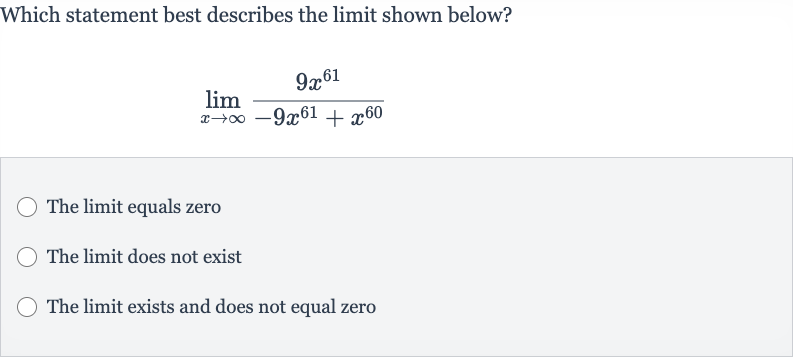Full solution
Q. Which statement best describes the limit shown below?The limit equals zeroThe limit does not existThe limit exists and does not equal zero
- Identify Powers: We are given the limit expression . To find the limit as approaches infinity, we need to analyze the behavior of the numerator and the denominator separately.
- Factor Out : First, let's look at the highest power of in both the numerator and the denominator. In this case, the highest power of is in both terms.
- Simplify Expression: We can factor out from both the numerator and the denominator to simplify the expression. This gives us:
- Evaluate Limit: As approaches infinity, the term approaches zero. Therefore, the expression simplifies to:
- Final Conclusion: The limit exists and does not equal . The correct statement is "The limit exists and does not equal ."
More problems from Power rule
QuestionGet tutor help
QuestionGet tutor help
QuestionGet tutor help
QuestionGet tutor help
QuestionGet tutor help

